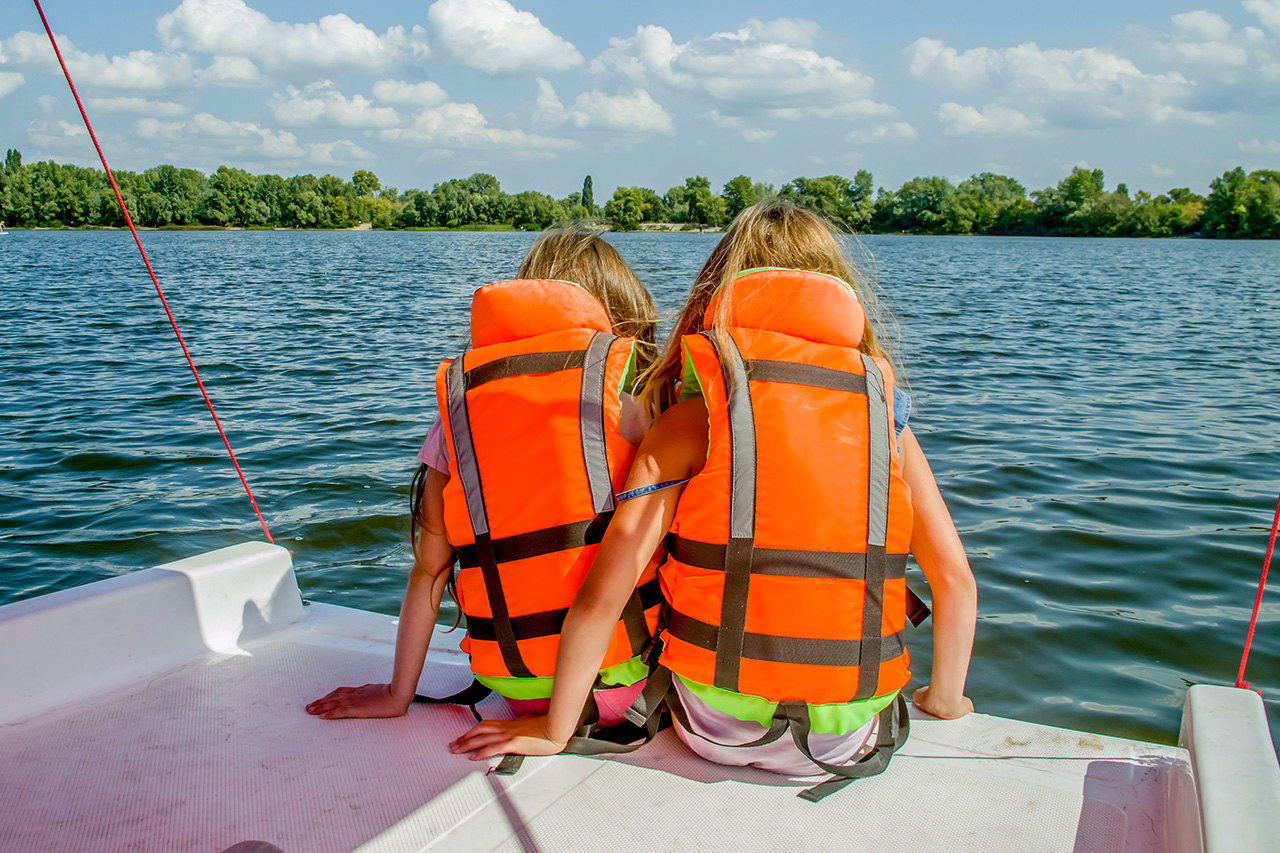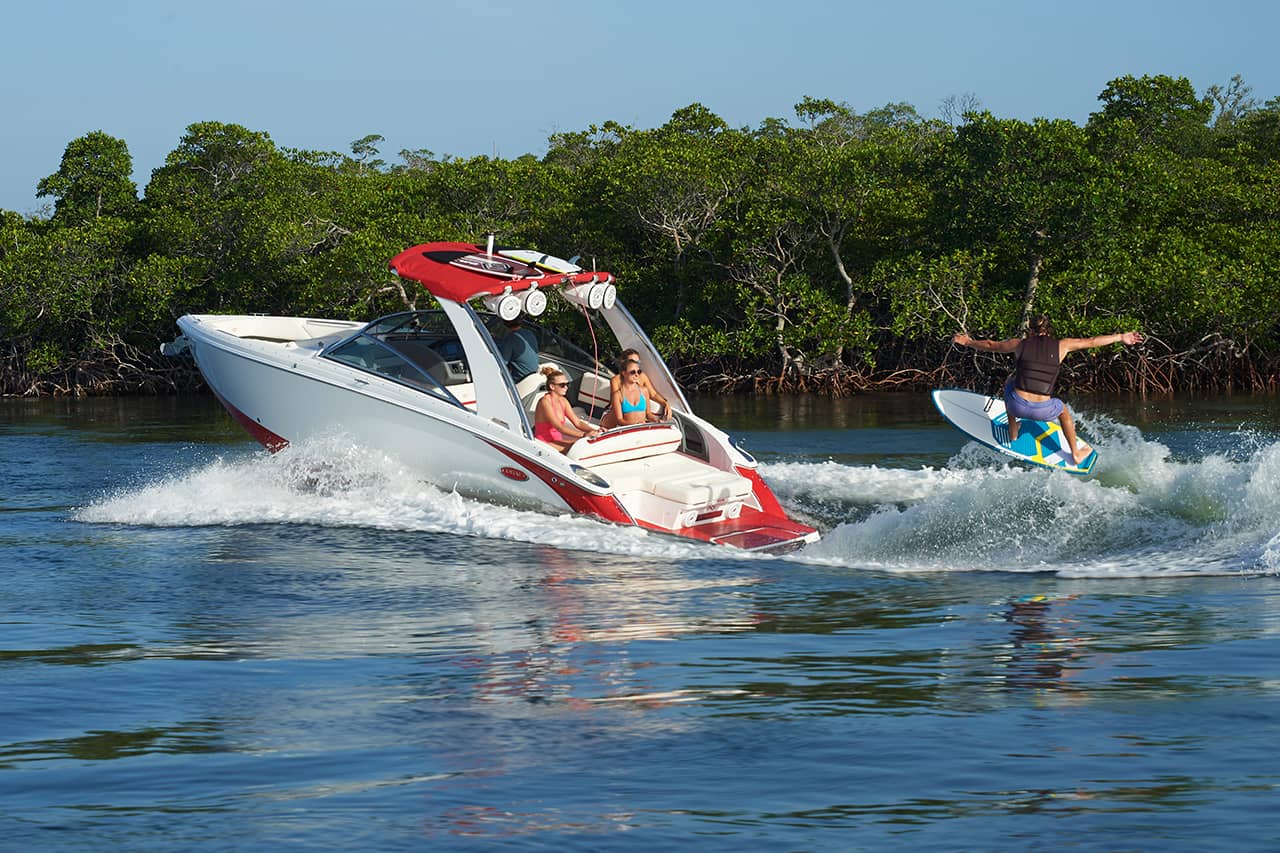Choosing the Best Life Jackets for Your Boat
A boating must, life vests are one of the first things you should assess as you plan your boating adventure.
When you buy a boat, depending what it comes with, you might need to also shop for life jackets — known also as life vests, and formally as personal flotation devices, or PFDs. Life jackets are designed to keep the person (or pet) wearing them afloat in the water. While sometimes this is for recreation, like wakeboarding and waterskiing, ultimately PFDs are life-saving devices, and you’re generally required to have one available for every person onboard a recreational vessel. There are several factors you have to take into consideration in choosing which life jackets to stow for your crew.

Life jackets, also known as life vests or PFDs, are the first accessory you should consider when buying a boat. IMAGE: ideally someone shopping for one or a wall of life vests/Types so you can see a few sizes.
Match the Life Jacket to the Boating Activity
Depending where you’re taking your boat and what you’ll be doing on it quickly narrows it down.
There are five main types of life jackets, and that’s what they’re called: Type I, II, III, IV and V.
Type I jackets provide the greatest buoyancy and is designed primarily for offshore use. Though bulky, they are designed to keep an unconscious wearer face-up, often in unpredictable ocean conditions.
Type II have slightly less buoyancy, and slightly less bulk. Also designed to turn/keep a person face up in the water, they’re generally used in boating that’s closer to the shoreline. Type II is the most popular choice to satisfy the US Coast Guard safety requirements, and they’re easier to stow than Type I.
Type III life vests, also known as “ski vests,” are the ones you see most often on people being towed behind the boat. They feature front-entry, and are designed to be more comfortable and form-fitting. They are designed for alert and awake wearers.
Type IV is a throwable, non-wearable PFD, designed to be held onto by the user. This may take the form of a safety ring, or a flat cushion (though we don’t recommend you use these for sitting on as it will reduce the buoyancy of the PDF over time).
Type V is the lowest-profile PFD that’s often incorporated into a combination floating device. Often inflatable, this is used for specific activities like whitewater rafting or as a sailboat harness.
Browse all types of life vests right now at Parts VU to get a feel for the different types.
Ensure the Right Fit for Your Passengers
A fully-functioning life jacket is also one that is fitted to its user.
Now that you’ve identified the best life jackets for your boat, be sure you have the right ones for your expected crew. In addition to some types offering women’s sizes, children’s vests come in various sizes. Be sure that the PFD is appropriate for the weight of the person. Too small and it won’t provide enough buoyancy. Too large, it can easily slide off the person. Every manufacturer provides a weight range on the device. Use this as a guideline. Try jackets on each of your passengers to be sure they have one that fits well. Buckle and cinch them up to be sure. If you inherit life jackets when you buy a used boat, you should also inspect each one for holes and tears and replace those right away.

Before you leave the dock, be sure each crew member has a well-fitting life jacket that is also rated for their weight. IMAGE: dad putting kid in lifevest, or kids (multiple) in life vests.
Be Sure they’re Stowable and Accessible
A life jacket is useless if you’re not wearing it.
Ideally while on the water everyone would wear their life jacket all the time. Accidents happen quickly, and 80% of people who die in boating accidents weren’t wearing a life jacket. Select comfortable jackets and stow them at close hand, should someone fall in the water who isn’t wearing their PFD.
.
Life Jackets are the most important thing on your boat.
Be sure you’ve got a well-fitting jacket for each passenger aboard, and that they’re within reach. In addition to it being a Coast Guard requirement, you never know when your entire crew will need them — and when they do, this will save their life. Affordable and easily stowable, check your inventory right now and replace and upgrade your PFDs before the start of the boating season.
